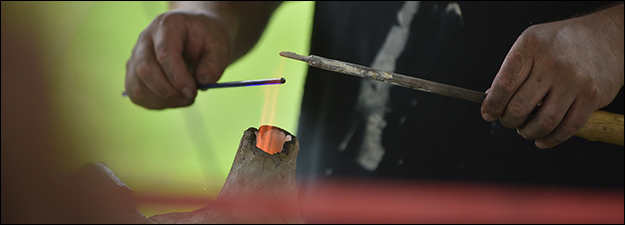Beauty and the Beast: The Influence of the Medieval Bestiary in Text and Image
Sponsoring Organization(s)
Special Session
Organizer Name
Elizabeth Morrison
Organizer Affiliation
J. Paul Getty Museum
Presider Name
Elizabeth Morrison
Paper Title 1
Factual and Fictional Lions in Old Norse Romance
Presenter 1 Name
Florian Schreck
Presenter 1 Affiliation
Univ. i Bergen
Paper Title 2
Inhabited Architecture: Animals and Animality at Wells Cathedral
Presenter 2 Name
Matthew M. Reeve
Presenter 2 Affiliation
Queen's Univ. Kingston
Paper Title 3
Looking Back at No-One: Altered Bestiary Imagery on the Hereford Map
Presenter 3 Name
Catherine Megan Crossley
Presenter 3 Affiliation
British Library
Start Date
12-5-2016 3:30 PM
Session Location
Bernhard 158
Description
The role of animals in the Middle Ages has recently become a popular topic for research in all realms of medieval studies. Given this interest, it seems a good time to turn attention to perhaps the most important source of information about animals in the period, the bestiary. The animal stories contained in the bestiary were used as inspiration for public sermons, daily reading for the religious, and entertainment by the nobility, thereby exerting a powerful hold over the understanding and interpretation of animals in the medieval world. This session examines the influential role of the text and imagery of the bestiary. The iconic stories and stable iconography of the bestiary were so well-known, in fact, that the bestiary's legacy was instantly recognizable, even when the animals were separated from their manuscript origins. Papers for this session address the textual influence of the bestiary in other literary traditions and artistic media that integrate iconography traditionally associated with bestiaries.
Beauty and the Beast: The Influence of the Medieval Bestiary in Text and Image
Bernhard 158
The role of animals in the Middle Ages has recently become a popular topic for research in all realms of medieval studies. Given this interest, it seems a good time to turn attention to perhaps the most important source of information about animals in the period, the bestiary. The animal stories contained in the bestiary were used as inspiration for public sermons, daily reading for the religious, and entertainment by the nobility, thereby exerting a powerful hold over the understanding and interpretation of animals in the medieval world. This session examines the influential role of the text and imagery of the bestiary. The iconic stories and stable iconography of the bestiary were so well-known, in fact, that the bestiary's legacy was instantly recognizable, even when the animals were separated from their manuscript origins. Papers for this session address the textual influence of the bestiary in other literary traditions and artistic media that integrate iconography traditionally associated with bestiaries.

